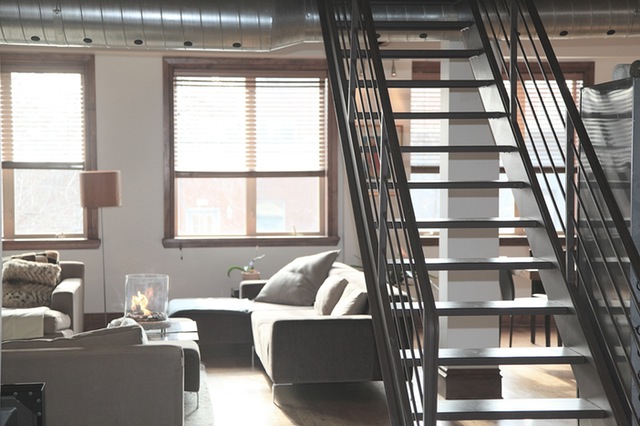
When a furnace is in its last days, homeowners sometimes feel stressed about having to make some tough decisions quickly. After all, a new furnace is a big investment in your home and your family’s comfort. In addition to important details regarding upfront costs, warranties, fuel sources and the furnace’s size, there are other factors to bear in mind to avoid unwelcome surprises in the future. By knowing what to consider before purchasing a new furnace, the process will seem less overwhelming, allowing you to make a decision that aligns with your budget and needs.
Download our checklist to ensure that you are considering the right factors when purchasing a new furnace. [download id=”3877″ template=”5 Things Homeowners Should Know Before Buying a Furnace”]
What Homeowners Should Know when Shopping for a Furnace 
1. Frequency of furnace repairs
After narrowing down your furnace choices, do a bit of homework to learn about their reliability. Online reviews will reveal how often other homeowners had to schedule repairs for furnaces made by the same manufacturer. Do not hesitate to ask HVAC technicians about their history with furnaces made by the manufacturers you’re considering.
You can also get an idea about the frequency of repairs that a furnace might need by looking at its warranty. Equipment that has 10 years of coverage, for example, might be more reliable than equipment with only a few years of coverage.
2. Expected operating costs
Look past a furnace’s price tag and consider its monthly operating costs. The U.S. Department of Energy’s Building Codes Data Book offers a map with five climate zones throughout the nation. Each zone has a range of British thermal units (Btu) to help you calculate the heating capacity based on geographic region and total heated square footage:
- Zone 1: 30 to 35 Btu per square foot
- Zone 2: 35 to 40 Btu per square foot
- Zone 3: 40 to 45 Btu per square foot
- Zone 4: 45 to 50 Btu per square foot
- Zone 5: 50 to 60 Btu per square foot
If your home is well insulated, use the lower number on the range. If it’s older or poorly insulated, use the higher number in the range.
A home is in western Oregon it is in zone 3. A 2,000-square-foot, well-insulated home in this region requires 80,000 Btu of heating capacity (2,000 ft2 x 40 Btu = 80,000 Btu heating capacity). You can use the same formula to estimate the heating capacity needed for different home sizes in different areas of the country.
After knowing the heating capacity your home requires, which a licensed professional should calculate, you must take into account a furnace’s efficiency to determine if it’s actual Btu output is adequate. A furnace with an 80,000 Btu input and 80 percent efficiency has an actual 64,000 Btu output, which is not sufficient for a 2,000-square-foot home (80,000 Btu input x 0.8 = 64,000 Btu actual output). Therefore, a furnace with a 90,000 Btu input and 80 percent efficiency might be a better match.
Once you know the heating capacity your home needs and find adequately sized furnaces, use the EnergyGuide label to estimate the annual operating costs. The dollar amount that you see on the label is an estimate of the annual operating cost based on the average national energy cost, which might not be the same energy rate for your area. To estimate your specific power use, multiply the kilowatt-hours (kWh) listed on the label by your power rate, which you’ll find on your energy bill.
Keep in mind that operating costs also depend on:
- Fuel source
- Outside temperatures
- The temperatures that you set
- Insulation
- The home’s building envelop
- Condition of ductwork
- The number of floors in your home
- The number of windows in your home
- Maintenance habits
3. Necessary system maintenance
Furnaces require regular maintenance to ensure their efficiency and longevity. In additional to professional maintenance, there are simple tasks that you can perform:
- Replace the filter bimonthly
- Keep vents and registers in the home unblocked
- Keep grass, leaves, bushes and debris a few feet away from outdoor units
- Inspect burner flames to make sure they’re blue
Talk to a sales representative to learn more about the specific maintenance tasks that you should complete for the furnace models of interest.
4. Tune-ups
A licensed HVAC expert should always inspect and maintain your furnace and other HVAC equipment. During a visit, the specialist will complete tasks, such as:
- Check the pilot light, blower, burner, ventilation features and other components for safety and performance
- Clean components
- Lubricate the moving parts
- Check for cracks, leaks and blockages in components
- Perform amp-draw tests and examine electrical connections
- Test the thermostat’s calibration
- Inspect safety controls
5. Frequency of maintenance
Schedule a professional maintenance and inspection appointment every year. This checkup not only promotes system efficiency and prevents the need for major repairs; it also keeps the furnace’s warranty active. Failing to schedule annual maintenance will void the warranty.
When you need a new furnace, let the experts at AAA Heating and Cooling help you find a unit that matches your comfort needs and budget. The specialists will visit your home to assess the unique needs of each space to design a system that is efficient and reliable. Contact us today to learn more about choosing the best furnace for your home.